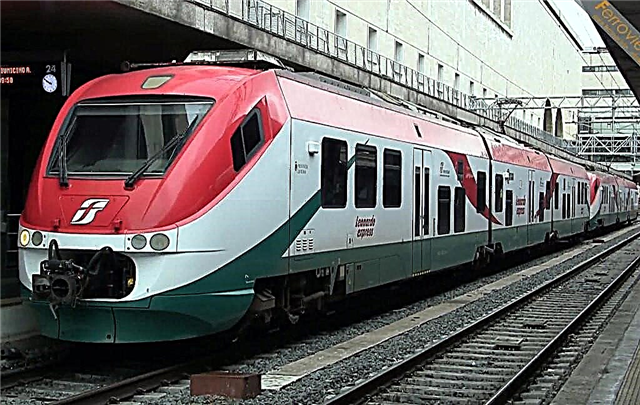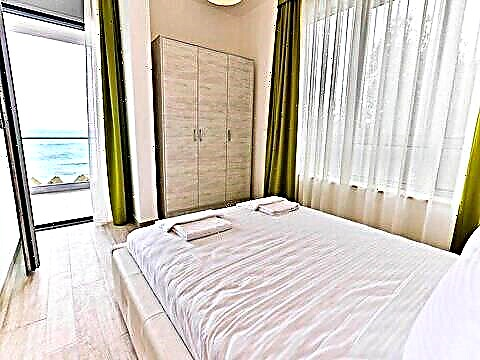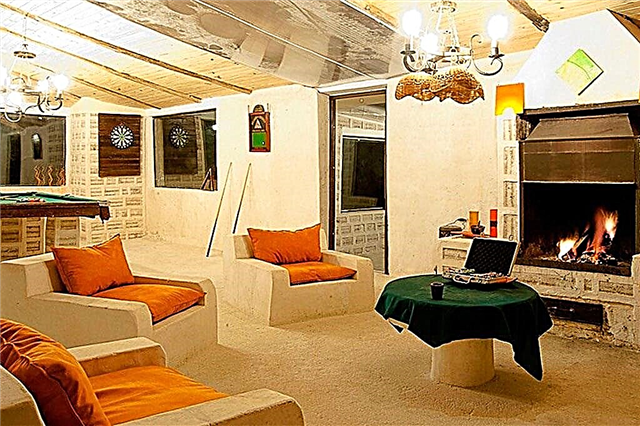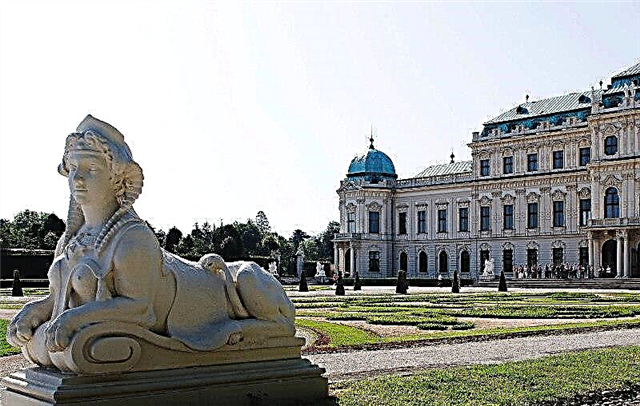Belvedere is a luxurious, snow-white palace ensemble located in Landstrasse, one of the districts of the Austrian capital. It was erected by the architect Lucas von Hildebrandt in the distant 18th century. The palace was made in the spirit of the Baroque. The palace is loved by travelers and is considered one of the key attractions of Vienna.
The word "belvedere" itself is translated from Italian as "beautiful view" and means a building on a hill. The name fully justifies itself: the palace is located on a hillside, from where, indeed, an amazing view of Vienna and the Church of St. Stephen opens.
Castle history

The construction of the palace complex began in 1714 by order of Prince E. of Savoy (1663–1736). Eugene was born in the capital of France, was the greatest military leader of his time and a great connoisseur of art. In 1683, under the leadership of this particular man, the Turkish army was defeated and Vienna was liberated from the siege. This was the first great victory to glorify the Prince of Savoy.
Due to the fact that Eugene did not have heirs, after his death, Anna Victoria acquired all the property. Several years later, the castle was bought by Empress Maria Theresa. After that, the palace remained in the possession of the Habsburg dynasty for a long time.

Speaking of the palace ensemble, it is often called a masterpiece of the Baroque era. The castle includes 2 buildings - Lower and Upper Belvedere. The buildings are located opposite each other and are separated by a garden. The construction of the first was completed in 1716, the second in 1722.
[tp_calendar_widget origin = MOW destination = VIE responsive = true subid = ”belvedervena”]
It was here in the Upper part that the declaration of independence was signed, which ended the occupation of Austria in 1955. Somewhat earlier, in 1941, within its walls, the signing of the Vienna Agreement on the accession of Yugoslavia to the Berlin International Treaty of 1940 took place.
Lower Belvedere

It was a living quarters. It was in this place that the prince's bedchamber was located. In addition, this building once hid the royal family who fled from the French Revolution.
In the palace you can see a dazzling marble hall decorated with frescoes by the Italian painter M. Altomonte. Also in the building are located: a marble gallery, gold and grotesque halls, several bedchambers and many more different rooms. It also houses a greenhouse and a ceremonial stable that once operated. At one time, 12 best horses were located in it.
Upper Belvedere

Eugene made the decision to build this palace a year after the completion of the first building. The Upper Belvedere served as a representative residence and was a source of great pride for its owner. It was here that all the solemn and official receptions were held, pressing issues were resolved.
In 1776 - who at that time owned a collection of Belvedere palaces - Maria Theresa decides to transfer to this building a series of paintings that belonged to her family. The son of Joseph II helped the empress in this. Already in 1781, a public museum was among the first to open in the Upper Belvedere. However, in 1891 the collection was moved to the Kunsthistorisches Museum, which opened in 1889.
Garden

Between the two palaces, which are part of a single complex, even in the time of E. Savoy (1803), on the advice of Archduke Johann, a park was laid out. It was of fabulous beauty, and the first alpine garden in Europe. It was designed by the architect from Bavaria D. Girard.
The project was developed in accordance with the concept of the French stereometry sample. The architect placed in the park: cascades, hedges, trees, fountains and sculptures.
The palace complex in our time

Today the National Gallery of Austria is located in the Belvedere. The collection of Austrian art is colossal in size. The collection includes exhibits from the Middle Ages to the present.
Since 1903, a gallery with the unambiguous name "Contemporary Gallery" has been located in the Lower Belvedere. The stable and greenhouse of this building are also reserved for painting. It has preserved the old setting and, of course, there is an opportunity to admire the many skillfully designed rooms.

The Upper Belvedere contains the best artistic and sculptural works of the 19th-20th centuries: Schiele, Klimt, Fendi, Amerling, Kokoschka and many others.
Unfortunately, the original appearance of the garden has not been preserved. However, this does not make it less interesting for modern tourists. Today, there are over 4 thousand different representatives of the alpine flora in the garden. The best time to visit the Belvedere to enjoy the alpine garden is spring and summer. During this period, many plants bloom, creating a unique pattern on the lawns.

Address: Vienna, Prinz Eugen Str. 27. Nearest metro station: Taubstummengasse.











